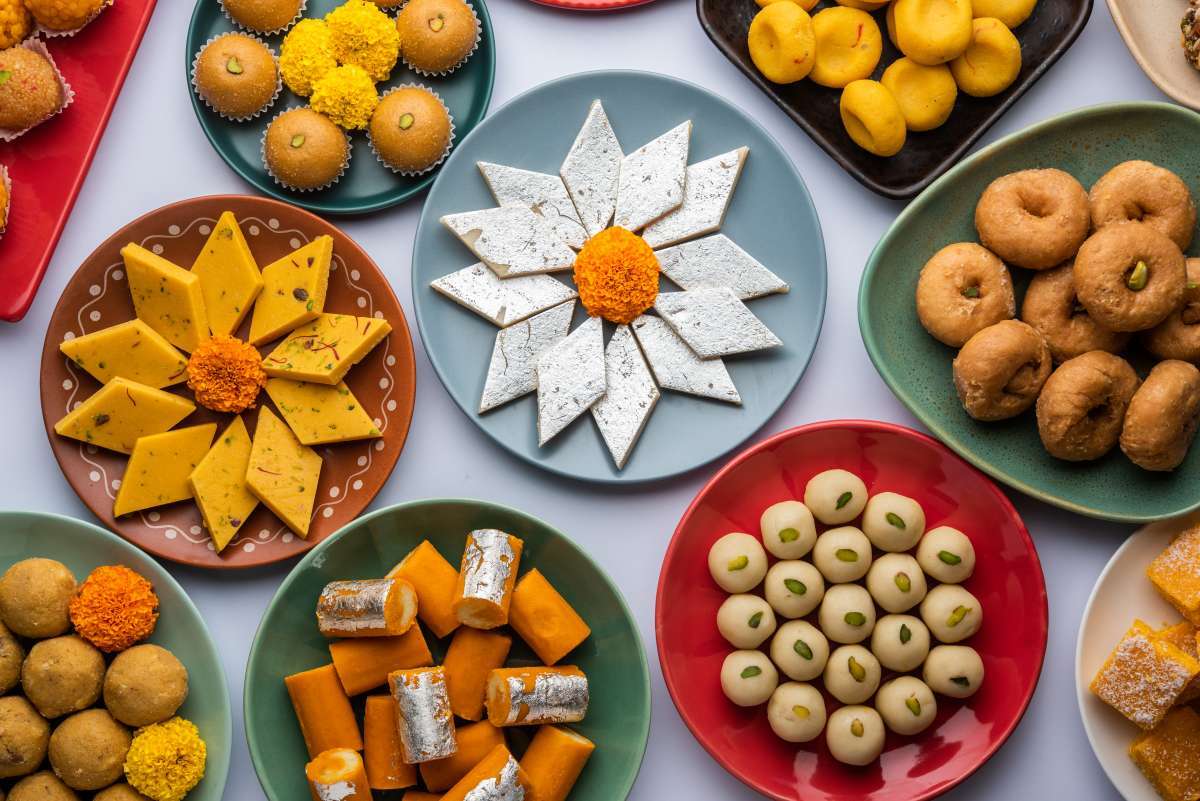Do you frequently ponder the nature of the various candies when you pass an Indian sweet shop? What are their ingredients or how are they made? To assist you in learning more about these mouthwatering sweet treats from South Asia, we have chosen to put up a handbook. The term Mithai, which refers to various types of Indian sweets, comes from the Arabic word mitha, which means sweet. There are numerous variations of certain manual of Indian sweets, most of which are derived from the sweet’s original recipe. Let’s examine the most popular mithai varieties that people typically eat, particularly on special occasions like weddings, parties, and other gatherings, as well as during religious holidays like Diwali, Eid, and Vaisakhi.
Several of the desserts’ recipes date back many years, and many of them were first prepared at home. Some families still prepare these delicacies at home, particularly if they have family elders who are skilled in doing so. Nonetheless, the majority of people either order them as gifts to be presented at particular events like weddings or purchase them as take-out from “sweet centers” or restaurants. The majority of “sweet centers” in major UK cities like Leicester, Birmingham, Southall, Wembley, Bradford, and Manchester sell the following popular Indian sweets.
1. Barfi
Barfi, which is sometimes referred to as Burfi or Barfee, gets its name from the Persian word “barf,” which meaning snow because it resembles ice or snow in appearance. Sugar, cream, and condensed milk are used to make this dessert. The straightforward variety typically has a thick, sweet texture and is white or creamy in color. Usually, it comes in the form of a little rectangle or diamond.
Due to added additives, this unique sweet comes in many different varieties. The other varieties are Khoya Barfi, which is made with buffalo milk, Besan Barfi, which is made with gram flour along with the other ingredients, Pista Barfi, which has course-ground pistachios in it, Fruit Barfi, which has small pieces of dried fruit, Coconut Barfi, which has desiccated coconut and comes in various colors, and Chocolate Barfi, which has a layer of milk chocolate.
2. Jalebi
This sticky, chewy treat is most popular during the Diwali celebration and is often orange in color. Typically, it is made using maida, a highly refined wheat flour, saffron, ghee, and sugar. It is prepared in a deep fryer or wok with very hot oil. Typically, the mixture is dropped into the hot oil from a hand-held cone and allowed to deep fry. The resulting shapes, which resemble pretzels or are circular, are then submerged in syrup to give them a sticky consistency.
Warm or cold desserts are offered. The syrup may occasionally be flavored with kewra water, rosewater, or citrus juices like lime or citric acid. Eating it warm or cold is an option. Some individuals even order the dessert with milk. The sweet, known as Zlebia, has its roots in the Middle East. Thus, it is possible that this cuisine was introduced to India at the time when Muslims ruled the nation. Hence, changing the J in its name to a Z.
3. Ladoo
This dessert, sometimes referred to as laddu, is one of the most well-known and popular Indian sweets. Compared to the other sweets, it is one that households make more frequently. They have a dark yellow color and a form similar to a golf ball. Gram flour, semolina, ghee, sugar, milk, cardamom powder, finely chopped almonds and pistachios, and vark are the typical ingredients used to make ladoo. Sometimes additional flours are also used.
Due to their thick, sweet, and dense texture, they are typically eaten on their own and you shouldn’t consume more than two or three at a once. This dessert comes in a various variation, including moti choor laddoo, boondi laddoo, and atta laddoo. These beautiful grooves have a history dating back to Gujurat in the 12th century.
4. Peda
Peda is a sweet which is circular and is like soft milk fudge. It”s main ingredients are khoya, sugar and traditional flavorings including cardamom seeds, pistachio nuts and saffron. Full fat milk or buffalo milk is used for the khoya. The milk is used to first make soft cheese as the base for the khoya dough and then the rest of the ingredients are added while it is still hot. Pedas are commonly made in two colours which tend to be white and yellow.
5. Gulab Jamun
This mithai has a rich, sweet flavor and is particularly well-liked.
It is produced from khoya, flour, and sugar, which is then deep-fried. Either in ball shapes or rounded rectangular shapes. After being fried and brown, it is covered in a sugar syrup with cardamom seeds, rosewater, kewra, or saffron flavoring. Dessicated coconut is frequently used as a garnish. Now you can easily prepare gulab jamun at home with the help of mixture packs.The term “gulab jamun” is derived from the Hindi word “jamun” and the Persian word “gulab,” which both refer to the rosewater-scented syrup.
6. Halwa
A sweet often made with semolina or wheat that may also contain nuts is called halwa, also known as halva, halveh, helwa, or halvah. Khoya milk is used to make traditional halwa. Ghee, milk, sweetened condensed milk, flour, or semolina are the components of halwa.
Halwa comes in a wide variety of flavors that may be found in sweet stores. This includes the pistachio-flavored Pista Halwa, the carrot-flavored Gajjar Halwa, and the satin-smooth Muscat Halwa, which is created with sugar, flour, and the best pistachio, pine, and blanched almond nuts. At the stores, it may resemble Turkish Delight a little.
7. Gajrela
This delicious dessert is a combination of finely shredden carrots, spices, and heavy cream. This dessert originates in the Punjab region of Pakistan and India. Full-shredded carrots, cream milk, sugar, cardamom powder, saffron, ghee, and chopped almonds and pistachios are the components required to make gajrela. The candy is sold in tiny rectangular pieces at a candy store and is quite tasty.
8. Balushahi
This is a typical sweet from Nepal, Pakistan, and northern India. It resembles a glazed doughnut but is typically firmer in texture. Maida flour based Balushahis are deep-fried in clarified butter before being covered in sugar syrup. All-purpose flour, ghee, and a dash of baking soda are used to make a stiff dough for the Badushah, a sweet that is identical to it that is then dipped in syrup. They have a delicious, somewhat flaky texture and are not overly sweet.
9. Mesoor
Mysore Pak is another name for this candy. It has the characteristic honeycomb texture of golden and cream. It is made of pure butter, clarified butter, sugar, oil, and gram flour (besan). If cooked correctly, it is neither too hard nor too soft, like barfi, and the middle should be a darker brown color than the sides. It is one of the Indian sweets with a firmer texture, and when you eat it, your mouth explodes with delightful crunch and crumble.
10. Cham Cham
This candy resembles gulab jamun, except it comes in smaller, multicolored balls that are primarily light pink, light yellow, and white. While it is from Bangladesh, Indian sweet stores are immensely fond of it. It also goes by the name Rasgulla. Full-cream milk, flour, cream, sugar, rosewater, lemon juice, and dessicated coconut are combined to make the delicious, sticky balls that are coated in cham cham. In order to manufacture cheese, which is a component of the recipe for this dessert, milk must be utilized.
In a sweet shop, you’ll find a wide variety of Indian sweets, some of which will differ according on the region of India. You can request a box in one of three sizes while purchasing sweets from an Indian sweet business. Afterwards, you can just choose and combine parts of the sweets you want to purchase and test. You should experiment with various candies because you never know when you might find a new favorite! However, due to the rich ingredients used in the majority of them, Indian sweets do have a health warning because they can be fairly high in fat and calories. Consequently, if you are concerned about your waistline, enjoy them seldom rather than too regularly.




